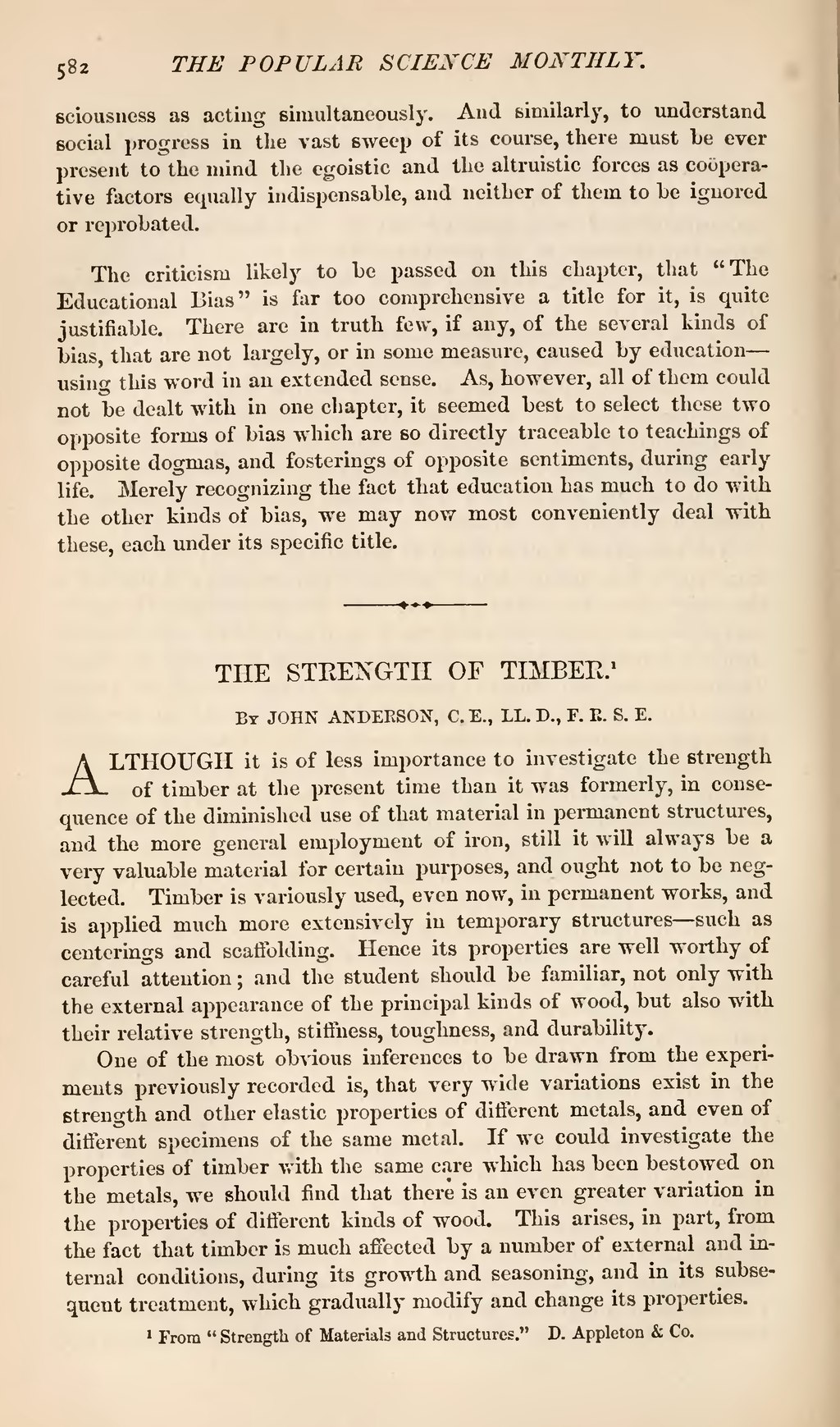sciousness as acting simultaneously. And similarly, to understand social progress in the vast sweep of its course, there must he ever present to the mind the egoistic and the altruistic forces as cooperative factors equally indispensable, and neither of them to he ignored or reprobated.
The criticism likely to be passed on this chapter, that "The Educational Bias" is far too comprehensive a title for it, is quite justifiable. There are in truth few, if any, of the several kinds of bias that are not largely, or in some measure, caused by education using this word in an extended sense. As, however, all of them could not be dealt with in one chapter, it seemed best to select these two opposite forms of bias which are so directly traceable to teachings of opposite dogmas, and fosterings of opposite sentiments, during early life. Merely recognizing the fact that education has much to do with the other kinds of bias, we may now most conveniently deal with these, each under its specific title.
| THE STRENGTH OF TIMBER.[1] |
By JOHN ANDERSON, C. E., LL. D., F. R. S. E.
ALTHOUGH it is of less importance to investigate the strength of timber at the present time than it was formerly, in consequence of the diminished use of that material in permanent structures, and the more general employment of iron, still it will always be a very valuable material for certain purposes, and ought not to be neglected. Timber is variously used, even now, in permanent works, and is applied much more extensively in temporary structures—such as centerings and scaffolding. Hence its properties are well worthy of careful attention; and the student should be familiar, not only with the external appearance of the principal kinds of wood, but also with their relative strength, stiffness, toughness, and durability.
One of the most obvious inferences to be drawn from the experiments previously recorded is, that very wide variations exist in the strength and other elastic properties of different metals, and even of different specimens of the same metal. If we could investigate the properties of timber with the same care which has been bestowed on the metals, we should find that there is an even greater variation in the properties of different kinds of wood. This arises, in part, from the fact that timber is much affected by a number of external and internal conditions, during its growth and seasoning, and in its subsequent treatment, which gradually modify and change its properties.
- ↑ From "Strength of Materials and Structures."D. Appleton & Co.

